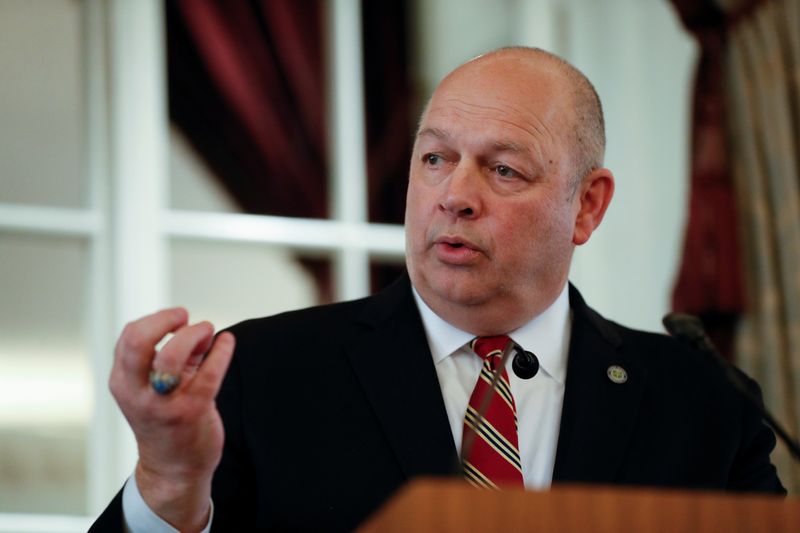By Alistair Smout and David Shepardson
LONDON/WASHINGTON (Reuters) - Flight testers discovered another flaw in the software of Boeing (NYSE:BA) Co's grounded 737 MAX, the plane that suffered two fatal crashes, though the company and the top U.S. aviation regulator said on Thursday the issue most likely could be fixed without extending the target date for the plane's return to service.
U.S. Federal Aviation Administrator Steve Dickson mentioned the new flaw at an airline industry event in London, but said he did not think it "will be a significant delay" in the aircraft's return.
The 737 MAX was grounded in March after two crashes killed 346 people. Boeing has had several setbacks in its efforts to update software that played a role in both crashes and win approval for the jets to fly again.
In January, the FAA and Boeing said they were reviewing a wiring issue that could potentially cause a short circuit on the grounded 737 MAX. The new issue involves an indicator light associated with the stabilizer trim system that incorrectly illuminated in the flight deck during testing.
Boeing said in a statement it was working on an update to ensure that the light "only illuminate as intended." It said the issue will not affect its mid-2020 estimate for the plane's return to service.
Dickson, the U.S. regulator responsible for approving 737 MAX updates, said a key certification flight might take place in the next few weeks, though it could depend on how Boeing resolves the new software issue.
He said that international air safety regulators were likely to agree on the design fixes needed for the return, but cautioned against any definitive timeline.
While international regulators including EASA might differ in terms of the operational return to service of the plane, he said they agreed on what needed to be fixed.
"On the design approval, from everything that I have seen I think we'll have very solid alignment," he said.
Boeing shares rose 3.6%, with investors reassured by the comments from Dickson and the planemaker despite the new flaw.
Boeing has said its best estimate is that the aircraft will not be back in the air until mid-2020, after endorsing simulator training for pilots before flights resume, and that regulators will determine the timing.
Last month, Dickson told senior U.S. airline officials the FAA could approve the return of the aircraft before mid-year, earlier than the planemaker has suggested, according to people briefed on the call.
On the wire bundles, Boeing said on Thursday it was still performing analysis including lab testing, fleet data assessment and third party reviews and that it would be premature to speculate as to whether the analysis will lead to design changes.
Officials have said the review was looking at whether two bundles of wiring are too close together, which could lead to a short circuit and potentially result in a crash if pilots did not respond appropriately.
"They have not given us a proposal on the wiring yet," Dickson said.

"I wouldn't say I'm worried. I want them to take whatever time they need to give us a fulsome and a data-driven proposal."